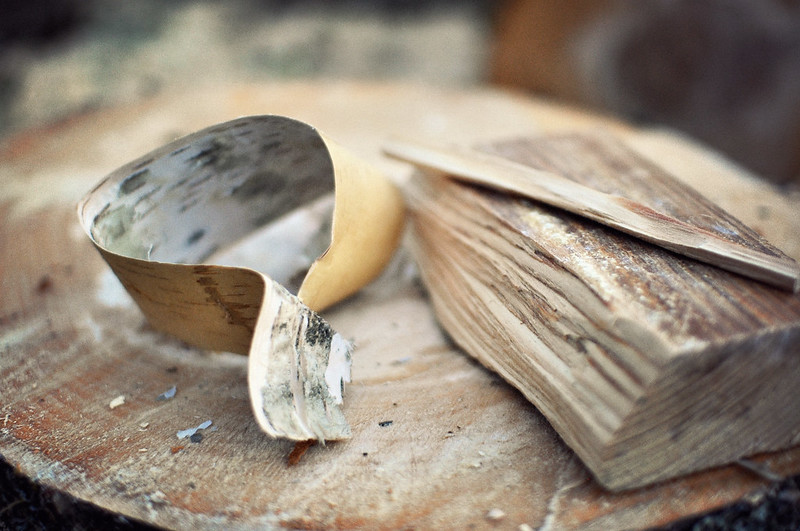The Benefits of Fatwood: A Natural and Eco-Friendly Fire Starter…

This page contains ebay affiliate links. I may earn a commission for qualified purchases at no additional cost to you. These links are marked (AD).
If you are looking for a natural, eco-friendly and effective way to start a fire, you may want to consider using fatwood. Fatwood ↗ (AD) is a type of resin-saturated wood that comes from the heartwood of pine trees. It has many advantages over other fire starters, such as its ability to light when wet, burn hot and long, produce low smoke, and last for a long time. In this article, we will explain what fatwood is, how to find it, how to use it, and why it is worth it.
What is Fatwood?
Fatwood is also known as “fat lighter”, “lighter wood”, “rich lighter”, “pine knot”, “lighter knot”, “heart pine”, “fat stick” or “lighter’d” . It is derived from the heartwood of pine trees, which is the central and oldest part of the trunk. The heartwood contains a high concentration of resin, a sticky and flammable substance that protects the tree from insects and diseases.
The resin-impregnated heartwood becomes hard and rot-resistant after the tree has died or has been cut down. The stump (and tap root) that is left in the ground is the primary source of fatwood, as it accumulates more resin over time. However, fatwood can also be found in other parts of the tree, such as the joints where limbs intersect the trunk .
Fatwood can be found in many species of pine trees around the world, especially those that produce a lot of resin, such as longleaf pine (Pinus palustris), which is native to the southeastern United States . Fatwood has been used for centuries as a fire starter, as well as for other purposes such as making pitch and pine tar .
How to Find Fatwood?
Finding fatwood can be a fun and rewarding activity, especially if you enjoy exploring nature and identifying different types of trees. Here are some tips on how to find fatwood:
- Look for pine trees that have fallen naturally or have been chopped down. The stumps and roots are likely to contain fatwood.
- Look for dead or dying pine trees that have signs of resin leakage, such as yellow or orange patches on the bark or sap dripping from the branches.
- Look for pine knots or branches that have broken off from the trunk. They may also contain fatwood inside.
- Use a knife or an axe to cut into the wood and look for a dark red or brown colour and a strong pine smell. This indicates that the wood is rich in resin and suitable for fatwood.
- Collect some pieces of fatwood and store them in a dry place until you need them.
How to Use Fatwood?
Using fatwood is very easy and effective. You only need a small piece of fatwood to start a fire, as it lights quickly and burns hot enough to ignite larger pieces of wood. Here are some steps on how to use fatwood:
- Cut or shave some thin curls or shavings from your piece of fatwood using a knife or a scraper. These will act as tinder and catch fire easily.
- Arrange some kindling (small sticks or twigs) in a teepee or pyramid shape over your tinder pile.
- Use a lighter, matches, or a fire steel to ignite your tinder pile. The fatwood shavings should catch fire quickly and produce a bright flame.
- Add more kindling and fuel (larger pieces of wood) to your fire as needed.
You can also use fatwood on its own or in combination with other fire starters, such as paper, cotton balls, dryer lint, etc. You can also use fatwood to light your fireplace, pellet fuel stove, barbecue, wood/coal stove or campfire .
Why is Fatwood Worth It?
Fatwood is worth it because it offers many benefits over other fire starters, such as:
- Flammability in wet conditions: Fatwood can light even when wet, thanks to the resin that makes it waterproof and resistant to moisture. This makes it ideal for starting fires in damp or rainy weather, where other materials may fail.
- Low smoke output: Fatwood produces very little smoke when burned, unlike green wood or wet paper that produce thick and acrid smoke. This makes it great for starting fires indoors or outdoors without creating too much pollution or irritation.
- Durability and portability: Fatwood is very durable and can be stored for a long time without losing its effectiveness. It is also very portable and can be cut into smaller pieces and carried in your pack or pocket to your next destination.
- Eco-friendliness: Fatwood is a natural and renewable resource that comes from the earth. It is harvested using sustainable forestry techniques and does not require any chemicals or processing. It also makes use of wood that would otherwise go to waste .
Conclusion
Fatwood is a natural and eco-friendly fire starter that can help you start a fire quickly and easily in any situation. It is derived from the resin-saturated heartwood of pine trees and has many advantages over other fire starters, such as its ability to light when wet, burn hot and long, produce low smoke, and last for a long time. You can find fatwood in the stumps, roots, and branches of pine trees and use it to light your fireplace, stove, grill, or campfire. Fatwood is worth it because it is a reliable, effective, and sustainable way to start a fire.
Disclaimer: This article is for informational purposes only and does not constitute professional advice. Always exercise caution when using fire and follow the safety guidelines of your local authorities. AlwaysReadyHQ is not responsible for any damage or injury caused by the use of fatwood or any other fire starter.

